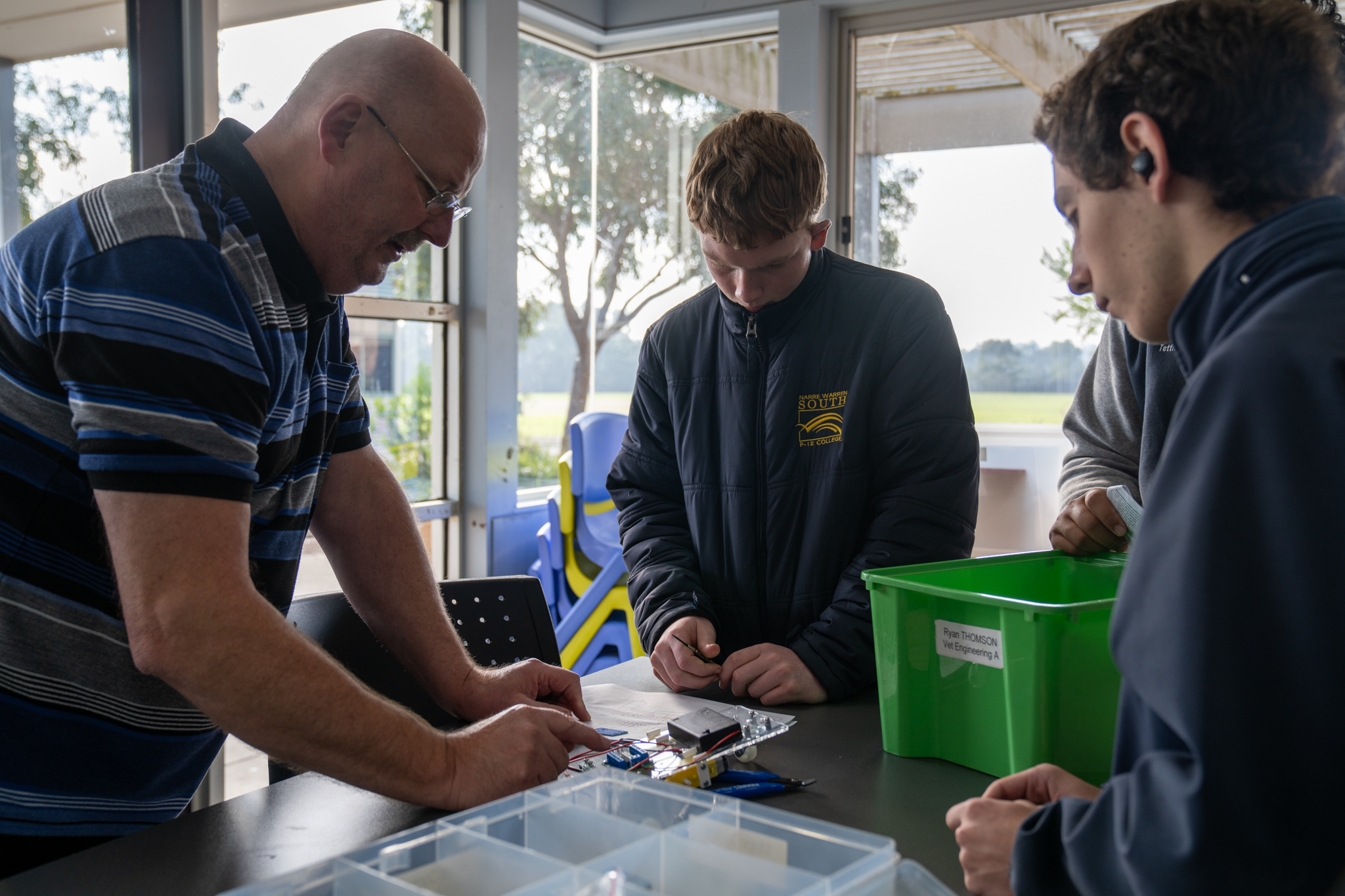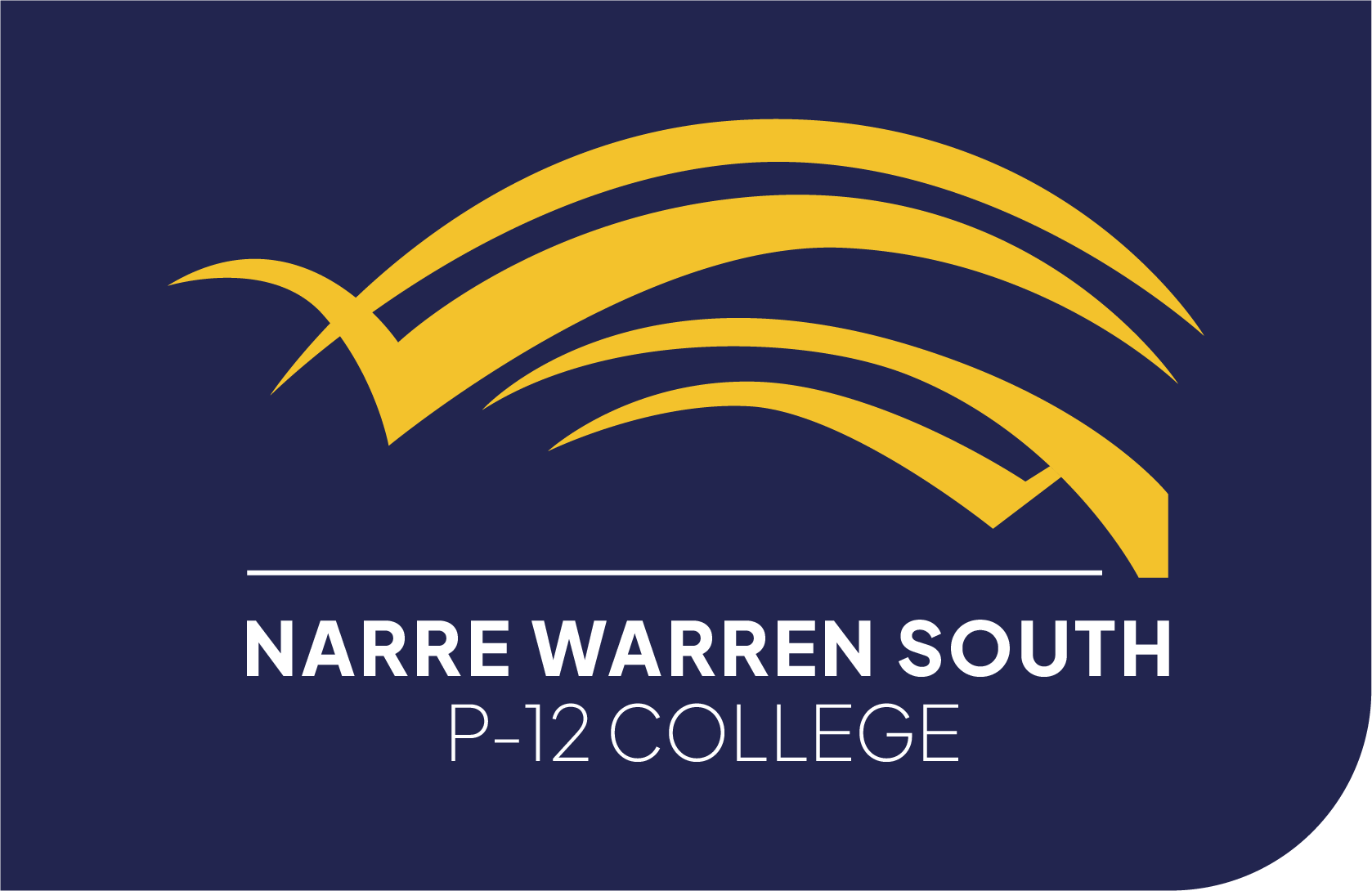Scroll Down
Secondary STEM

Introduction
The concept of “STEM” is a relatively recent development in education, and recognises how modern research and industry are conducted. People working in these fields use whatever skills, knowledge and technologies are needed to achieve the desired outcome. Typically aspects of many disciplines are involved, not just those of Science, Technology, Engineering and Maths. Just as important are the range of skills that allow these related areas to work well together, including critical thinking, problem solving, project management, creativity, coding, analysis and presentation.
Rationale
The STEM Program at Narre Warren South P-12 College aims to prepare students for this modern world. It does so by giving them experience at Problem-Based Learning, where the content covered is driven by what is needed for the work at hand. Students are given scenarios with problems to solve, and then taught to break those problems into smaller parts, analyse what is required for each part, research and problem solve solutions, then present their work. The areas of Science, Technology, Engineering and Maths are tools they can use, rather than ends in themselves.
Students
Narre Warren South’s STEM Program is designed to cater for students interested in learning and working in any of these associated fields, or who have interests in design, problem solving, or how and why things work. It brings together a group of academically confident, enthusiastic students who can work and learn independently and in collaboration, who can think creatively, and who like to tinker, test and make things with their hands. They appreciate being challenged in class and can work toward longer term goals.
Curriculum
At Year 7 STEM students do two unique classes, STEM Engineering and STEM Projects. In Engineering they learn about basic engineering principals, the importance of testing designs, and the basics of electrical circuits. They begin by designing and building bridges and finish by making a line-following robot. In Projects they develop ‘soft’ skills like critical thinking and problem solving while researching the issues with colonising a planet out in space, and continue by designing and creating a container from wood we laser-cut at school.
Pathways
Year 8 STEM builds on Year 7. In Engineering more complex circuits and robots are built, tested and coded, while in Project the physics of Superheros is studied before moving into 2D and 3D computer aided design and 3D printing. Year 9 further consolidates these skills, while focusing more on the overall design process and the physical product at its end. Students interested in taking their STEM journey further have two options at Year 10, VCE Unit 1 and 2 Systems Engineering and VET Engineering Certificate 1 and 2, both of which can continue through until the end of Year 11.
Entry
Entry to the STEM Program at Year 7 involves sitting an entry test early in Term 4, as well as a short interview with one of the STEM staff. The test looks for a student’s creativity, problem-solving skills and ability to think logically, while the interview is a chance to say ‘Hello’ and to get to know the students a little. At the end of the application process a class of up to 25 students will be selected. Students wishing to move into the STEM program after the start of year 7, should space become available, will have their academic record checked and their teachers contacted about their suitability for the program.

